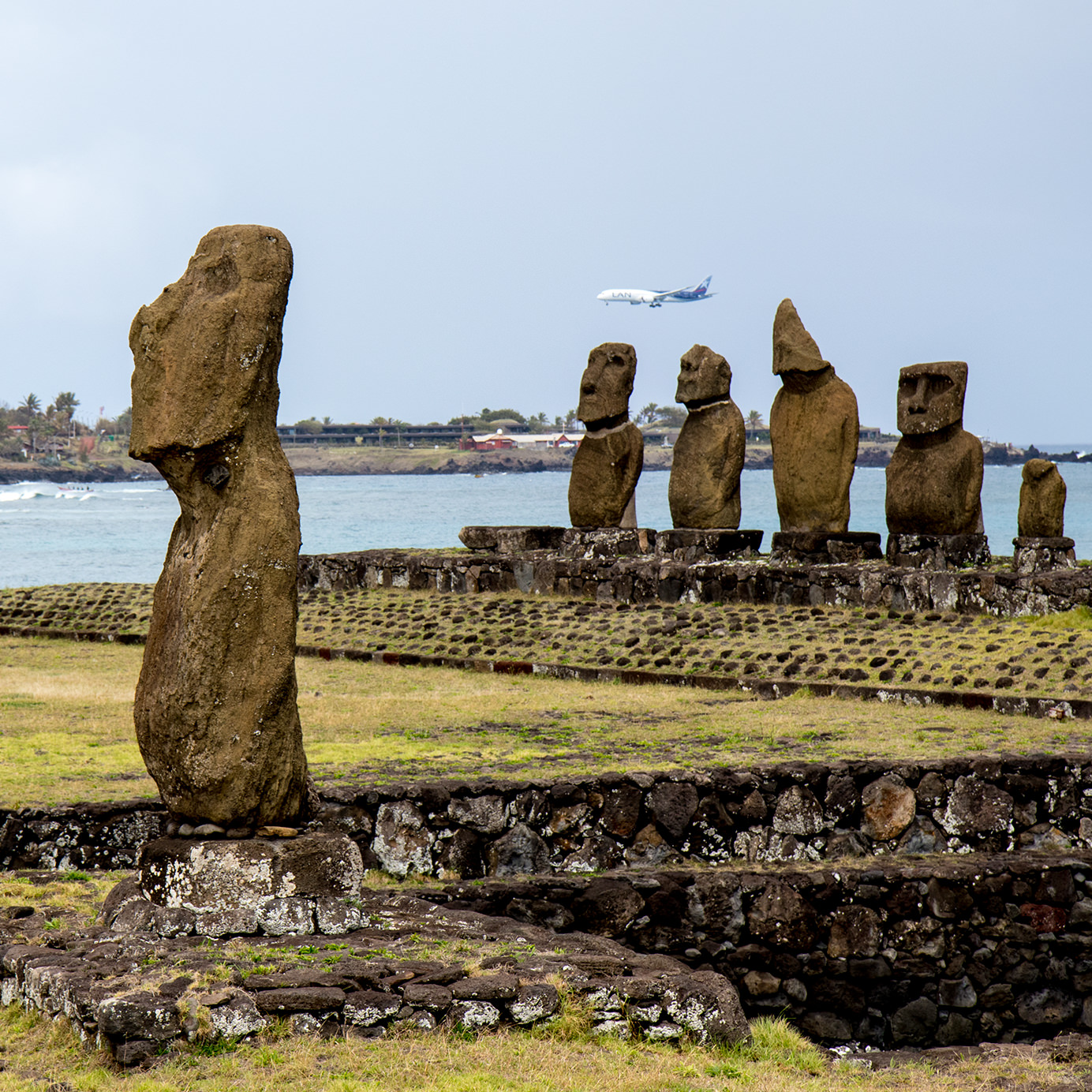To get to Cervecería Mahina, the world’s most remote brewery, your journey starts in Chile. On most days there’s a single early morning flight from Santiago to Easter Island. The jet takes off, turns due west to the Pacific Ocean, and remains on that course for five and a half hours. It’s nearly the same distance as a flight from New York to Los Angeles. Easter Island, approximately 63 square miles, appears only a minute or two before you land. The brewery is less than two miles from the airport — a vital link without which it could not operate.
Mike Rapu, Cervecería Mahina’s owner and cofounder, is native to Easter Island. He began planning the brewery in 2008, but the story of the operation goes back much further than a decade.
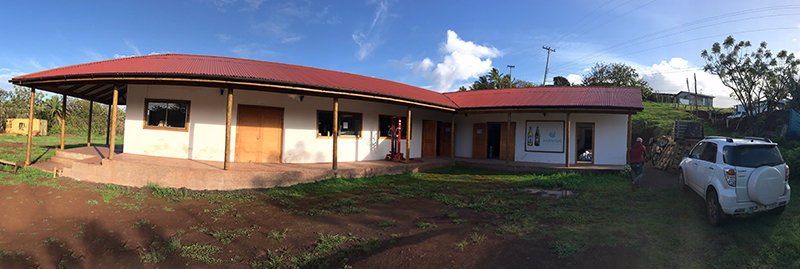
First, a brief history. No one knows exactly when Polynesians arrived on Easter Island. Estimates range from the 8th century to the 12th century A.D. The Dutch reached the island in 1722 and were astounded by the 30-foot-tall “stone figures” – the famous Moai – that dotted the island. By the time the Spanish and then the English arrived a few decades later, none of the monoliths were left standing. What happened in the interim is still a mystery.
Whatever the case, a combination of European colonization and internal strife devastated the island. By the 1860s, a population of tens of thousands was reduced by disease, slavery, and killing to a few hundred indigenous people. (The population would eventually dwindle to 111 Rapa Nui.) Chile annexed the island in 1888, and most of the land was rented out as a sheep farm to a Scottish company. The Rapa Nui were confined to the island’s chief town, Hanga Roa, and their rights were severely curtailed.
During this period, from the late 19th century until 1966, when the Rapa Nui gained Chilean citizenship, brewing beer and distilling alcohol were strictly off limits. Mike Rapu’s grandfather defied the local authorities, distilling a corn-based liquor, which earned him a whipping, leaving his back scarred. Rapu’s childhood memory of his grandfather’s scars inspired him to create the brewery, Cervecería Mahina.
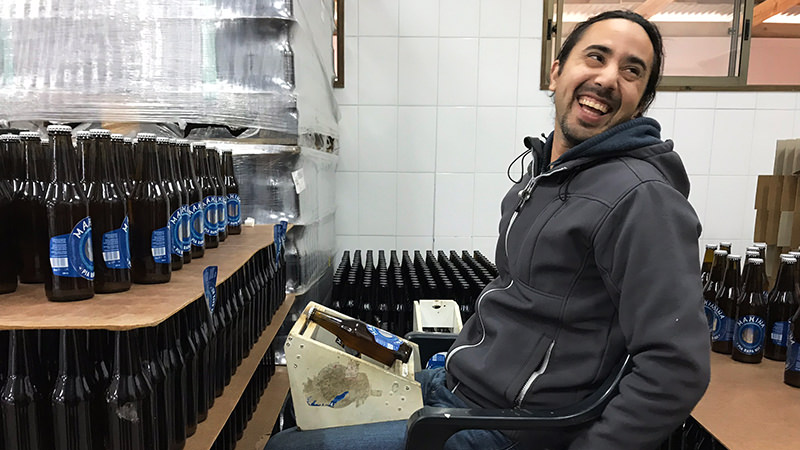
Rapu and an early partner recruited a brewmaster, Pedro Salfate, a trained biologist, in Santiago in 2008. Salfate had worked in a brewery and had some experience homebrewing, but Mahina would be where he brewed his first commercial beers. After spending two months developing the brewery’s initial recipes, Salfate and his wife, Sofia, moved to the island. He went to work brewing, and she found work as a tour guide.
The brewery debuted beers based on Salfate’s original recipes the following year. There was a Pale Ale weighing in at 4.8 percent ABV, and a 6.8 percent Porter. The team saw initial success, earning local customers and some international attention.
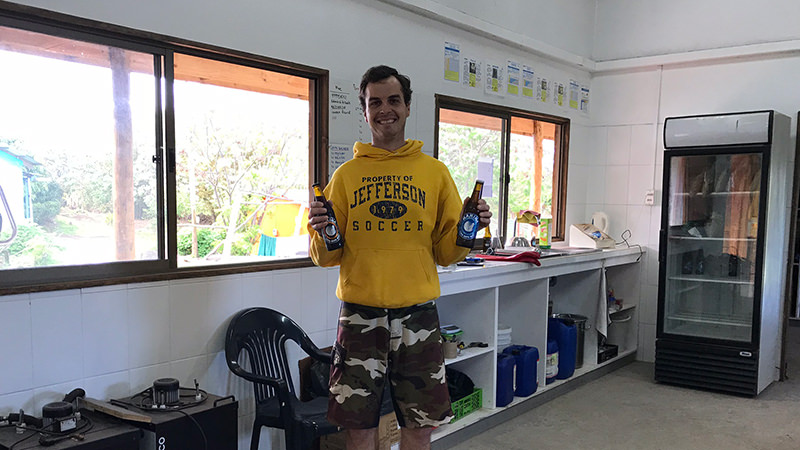
Still, there are unique challenges of brewing beer on a remote, sparsely populated island, and Mahina had to deal with all of them. The beer is brewed using local water, drawn from wells and rainwater collection, but everything else has to be imported. Hops, yeast, and glass bottles are packed into the hold of the daily flight from Santiago. This is a vital but expensive reality.
Mahina also attempted to export beers back to mainland Chile, building on the initial attention surrounding its launch, but the air freight costs ultimately proved to be too expensive. The market was too crowded with craft beers for a pricey import to succeed.
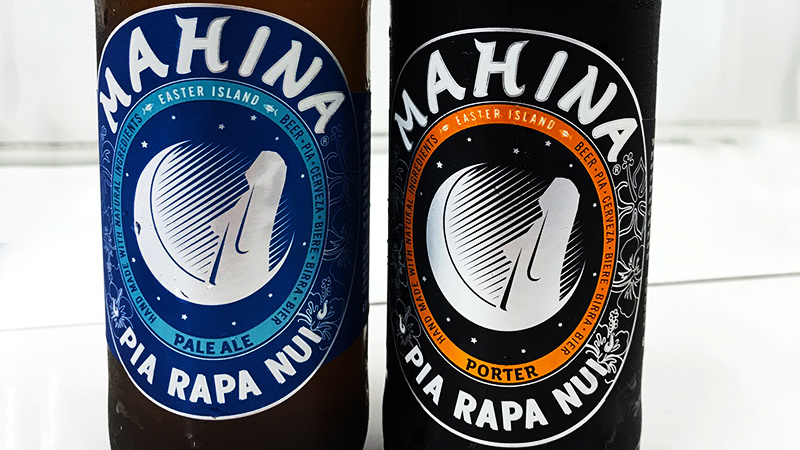
These challenges eventually proved to be too much, and in 2012 the brewery suspended operations. Salfate assumed his days as a brewer were over, and he took up a tourism job. Two years later Rapu came back to Salfate with good, if surprising, news. He had bought out his original partner and he wanted to reopen the brewery.
Cervecería Mahina has been operating steadily ever since. The brewery found a niche serving the small but growing number of tourists who visit the island, seeking out the iconic Moai. When I visited the brewery in October, 2017, Salfate estimated that tourists consumed 80 percent of the beer they were brewing at the time. Distribution is local, focused on hotels, restaurants, and retail. Production had steadied at 2,000 to 3,000 liters monthly.
The revived brewery still produces a Pale Ale and a Porter, both based on Salfate’s original recipes. The beers are bottled unfiltered and unpasteurized. The Pale Ale, brewed with Willamette hops, is light, a bit cloudy, and slightly malty. The Porter pours dark and offers up coffee and chocolate notes, but the body is surprisingly light. Six-packs of either retail for the equivalent of $4 or $5.
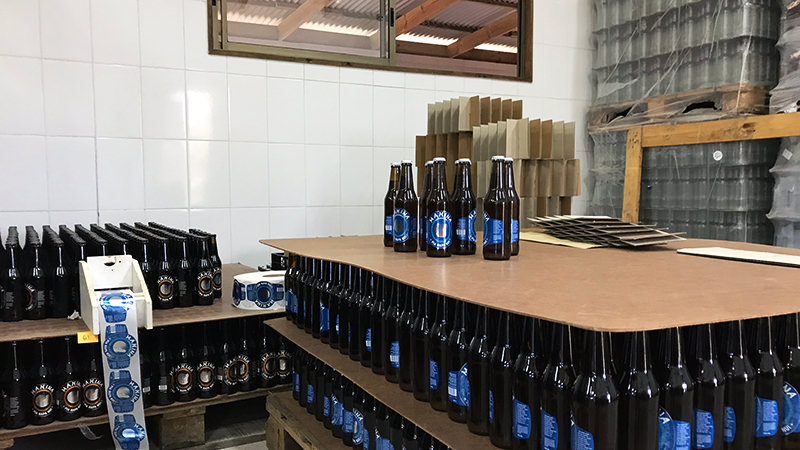
Kegs are in the works but, for now, everything is bottled and labeled by hand. Cascade and Galaxy hops had recently arrived when I visited; Salfate was experimenting with an IPA, a beer he had been thinking about making Mahina’s third for a “long time.”
Will Mahina’s next beer be a fruity, cloudy, not-so-bitter, low-alcohol IPA? It’s not out of the question. Global craft beer trends are hard to escape or ignore, even at the world’s most remote brewery.
